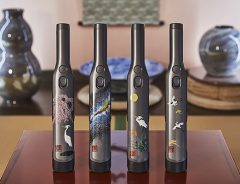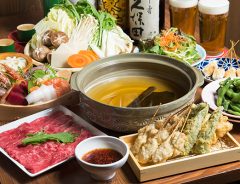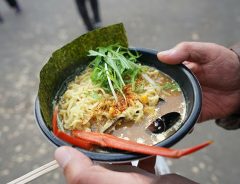- Source:
- @Jeff Kubina / Michinoeki Echizen / @oyayubi_814 / @minezou738 / @KenTaiyo / @utan1637
Related Article
-

Designs By Famous Japanese Gagyu Kiln Artist Decorate Limited Edition Vacuums By Shark
-

Kyoto Gatten’s Succulent Wagyu Tempura Joined By Wagyu Shabu & Sukiyaki This Winter
-

Torahachi Shoten, famous for “swimming squid” live sashimi & seared bonito, opens Umeda store
-

Tokyo’s Fisherman’s Festival Impresses With Awesome Seafood
-

Chef YouTuber shows how to prepare giant seafood catches to make mouth-watering Japanese cuisine
-

Shark Attack – Japanese Cat Attacks Shark Toy



Sometimes, certain less populated prefectures of Japan which are less commonly frequented by tourists and less commonly known by average city-dwellers are characterized in popular culture as wild and dangerous. For the most part, such characterizations are tongue-in-cheek, and even the locals enjoy playing it up. This seems to be the case with Fukui, located in the central Chubu region of the Honshu island facing the Sea of Japan, and one of the least populated prefectures.
This picture posted on Twitter last Saturday by @oyayubi_814, along with the caption: "Fukui...dangerous!" caused quite a stir.
It would seem to be a hammerhead shark lying on a street gutter, clearly far removed from its natural marine habitat. As of Tuesday, the tweet has reeled in over 110,000 likes and has been retweeted over 62,000 times.
One of the early reactions was: "Sharknado approaching! omg"
And there were many other comments on the "dangerousness" of Fukui Prefecture:
---"Do sharks swim in the streets over there? lol"
---"Sharks always swim in the water pipes. That's just common sense in Fukui."
---"What??? How did this happen?!"
---"You guys don't know the real Fukui Prefecture..."
However, the tide quickly turned on the story when the original tweeter revealed a crucial detail:
"This hammerhead shark was being used as a prop to attract customers by the fishmonger at the roadside station near Active House Echizen. He does this from time to time."
And clearer evidence followed shortly afterwards:
"Excuse me for butting into the thread but it's this guy from the roadside station, right?"
With this sharknado in a teacup cleared and the tension defused, the topic ebbed away as the last stragglers discussed shark recipes
"Hammerheads are tasty deep-fried with sweet and sour sauce (chili sauce too)"
Incidentally, shark meat is a delicacy in some parts of Japan, most famously in Miyagi Prefecture. Moukazame, or salmon sharks are the most commonly used in cooking. In addition to being deep-fried, the meat is ground into a paste and made into fish cakes, the cartilage is occasionally served with sour plum paste and the heart is eaten as sashimi. If you're going to prepare your own, be sure to marinate or brine the meat to remove the smell of ammonia.